I took my structural geology students out the Billy Goat Trail (upstream half of the “A” loop, near Potomac, Maryland) last Friday, and had them gather data for a project to assess whether or not Mather Gorge is controlled by a fault. I got this idea from Aaron Martin, the structural geologist at the University of Maryland, and I think it’s a nice project for structure students early on in the semester, as it gives them practice collecting a lot of data, and plotting that data on a stereonet.
Long-time readers will know that the Billy Goat Trail is one of my favorite areas to hike and geologize (and subsequently blog about). It’s chock full of geologic wonders, little hidden gems scattered across a dramatic landscape.
While the students were busy collecting strikes and dips of foliation planes and joint surfaces, I wandered around in a few new areas and noticed things. One thing I noticed were a bunch of new examples of graded bedding. Most of the rocks along the Billy Goat Trail started off as deep sea turbidites, and they bear the distinctive graded bedding that results from that depositional setting.
Here are a few examples. Remember that Abrupt transitions from fine-grained sediments to coarse-grained sediments mark the base of each graded bed, and then the grain size gradually (and gradationally) changes to fine grained as you head “up” (paleo-up) from the base of the bed.
Let’s start out with two shots where photo-up is the same as paleo-up:
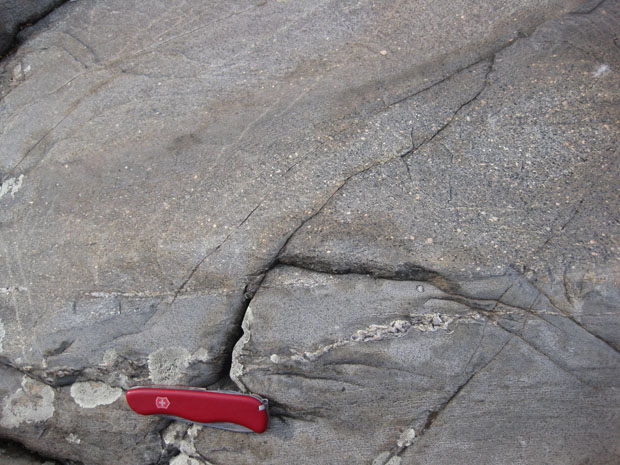
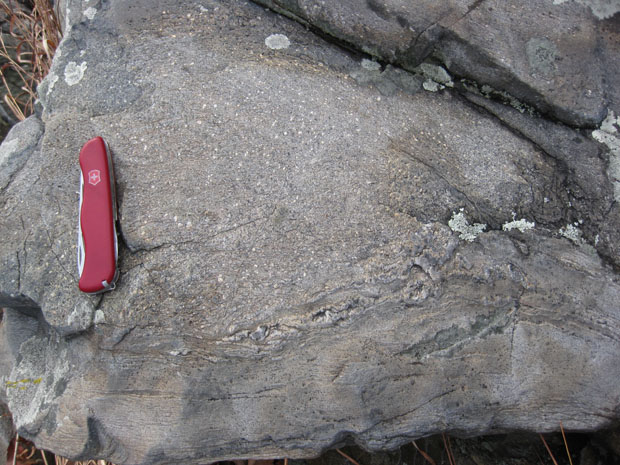
Here’s a nice look at the base of the bed (abrupt fine to coarse contact) here; younging direction is to the right:
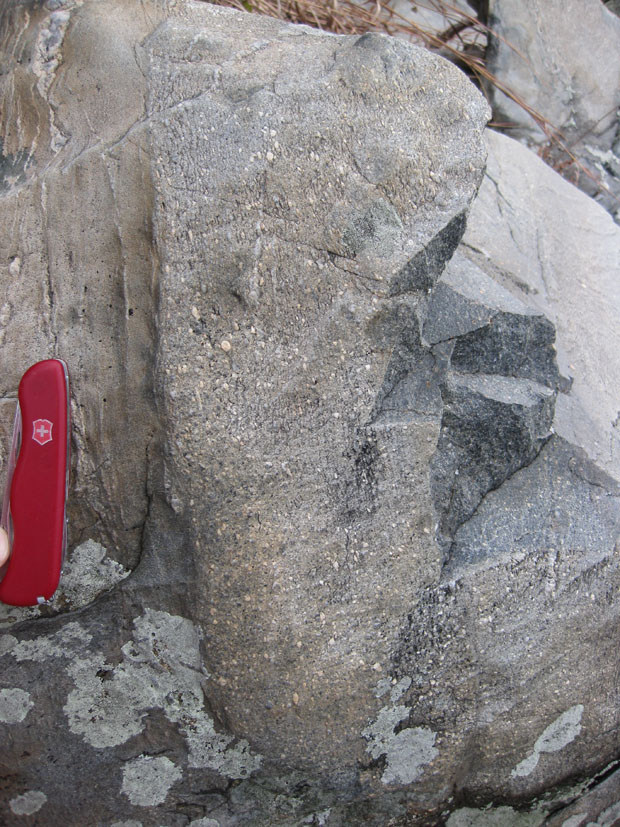
Here’s an upside-down graded bed (tectonically inverted) that has been folded into an antiform:
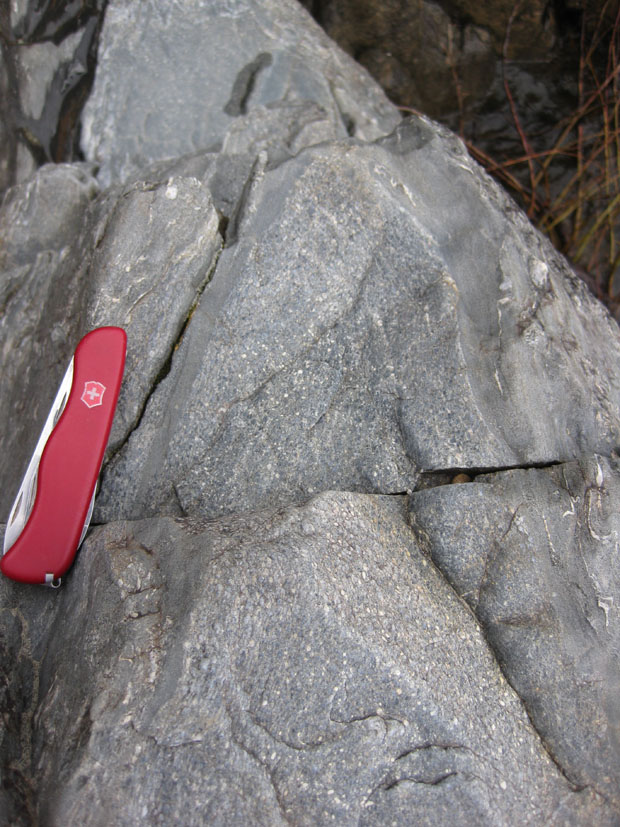
Two complete graded beds overprinted by quartz veins; younging direction or paleo-“up” is to the right:
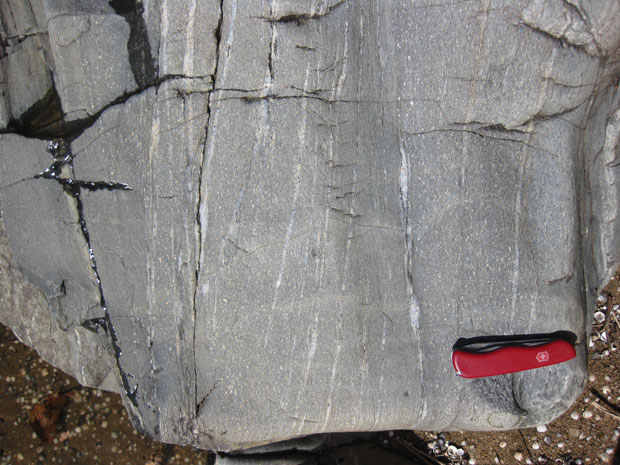
One more, close-up, just to round out the post:
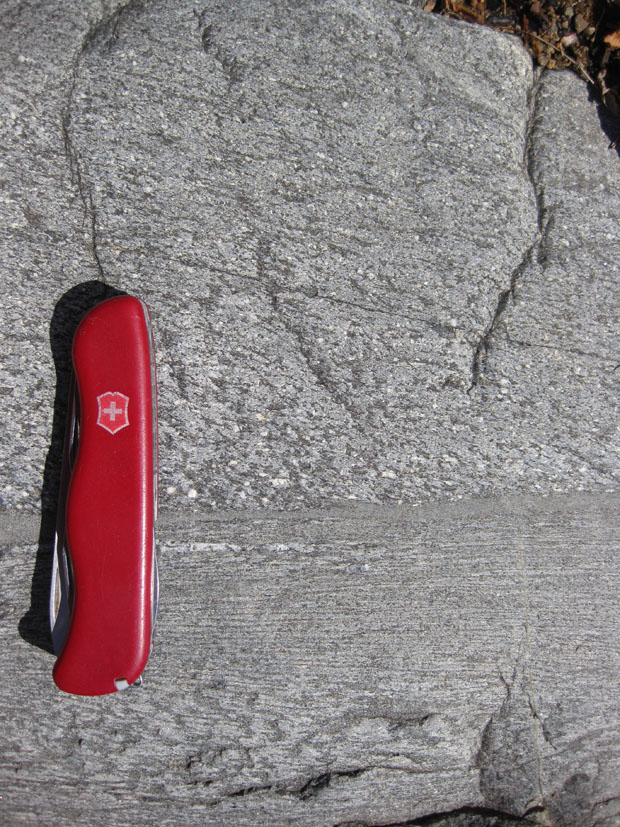

0 thoughts on “News from the Billy Goat Trail (1): Graded beds”